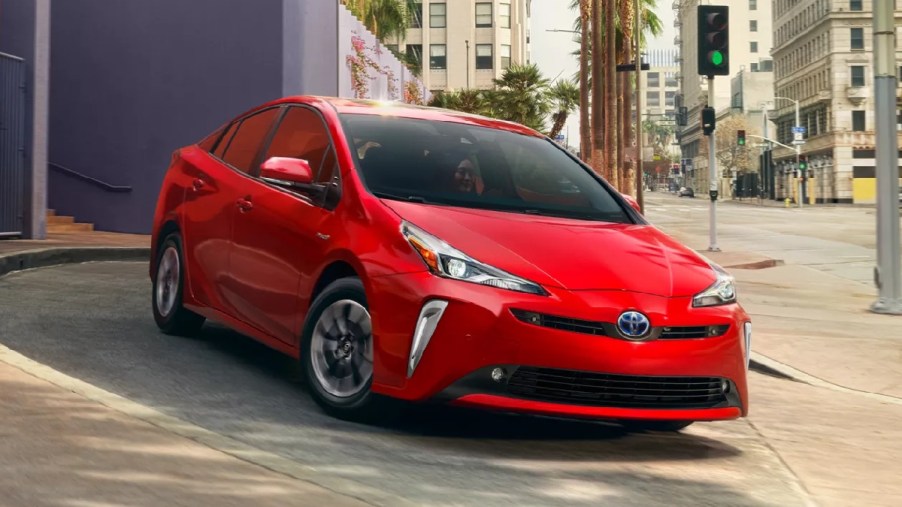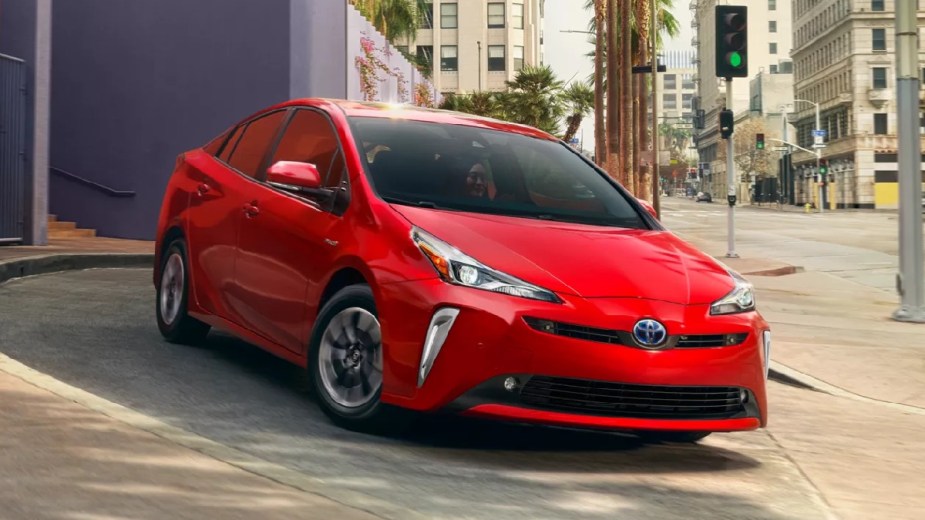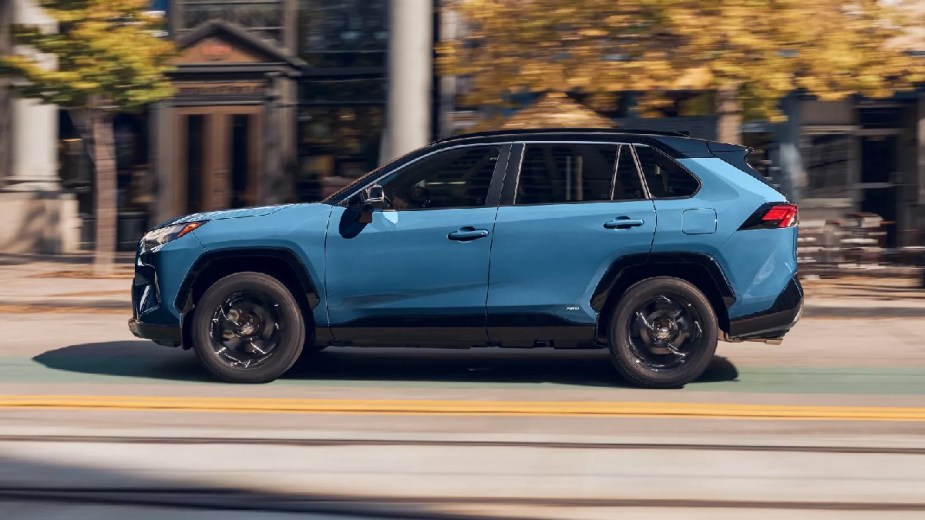
Why Do Hybrid Cars Get Better Gas Mileage for City Driving?
Traditional gas-powered vehicles usually get better fuel economy for highway driving. The stop-and-start traffic for city driving is generally less efficient than for smooth highway driving. However, for hybrid cars, it’s often the opposite. Hybrids typically get better gas mileage for city driving. Read more to find out why.
Hybrid vehicles have higher fuel economy for city driving because of electric motor and battery pack

While not always the case, the highway fuel economy for hybrid cars is often higher than for driving in the city. For example, the Toyota Prius, the best-selling hybrid of all time, gets an estimated gas mileage of up to 58 city/53 highway mpg for the 2022 model year. Another popular hybrid is the 2022 Toyota RAV4 Hybrid crossover SUV. It has an estimated fuel economy of up to 41 city/38 highway mpg. Conversely, the fully gas-powered variant of the RAV4 gets a better highway gas mileage (up to 27 city/35 highway mpg).
First, it helps to understand how hybrid vehicles are different from traditional gas-powered cars. While a traditional gas-powered car has an internal combustion engine, a hybrid features an engine, one or more electric motors, and a battery pack. The addition of the electric motor and the battery back is the primary reason why hybrids get such good city gas mileage.
During city driving and light acceleration, hybrids primarily use the electric motor. This takes the strain off the gasoline engine. As a result, it improves the fuel economy. However, for highway driving, hybrids mostly use the engine — and, in turn, have a higher rate of fuel consumption.
Regenerative braking also contributes to better city gas mileage for hybrids

Another factor that contributes to better city gas mileage for hybrid cars is brake regeneration technology. The friction created by applying the brakes creates a great deal of kinetic energy. For traditional gas-powered vehicles, this energy is wasted as it turns to heat instead of motion, as detailed by KBB.
However, regenerative brakes in hybrid vehicles (as well as EVs) capture the kinetic energy. It then transfers the energy to the battery. Since the brakes are more often applied during city driving, the regenerative braking system gives hybrids a boost for city mpg. The regenerative brakes typically help power a hybrid car’s auxiliary functions, such as the climate control and sound systems.
Also, some hybrids have an EV mode. For the EV mode, a hybrid vehicle can drive on electric-only power for short distances, which improves city gas mileage. The EV mode for hybrids is especially beneficial when stuck in heavy traffic and just inching along at a slow pace. Some hybrid cars also have an efficiency-enhancing ECO mode, which reduces the engine power output and responsiveness of the gas pedal.
How can I improve fuel economy for a hybrid?
Along with selecting the EV or ECO mode, there are some measures that you can take to improve fuel economy in a hybrid car. This includes accelerating more slowly, not driving at an excessive speed, and not doing any sudden braking. Also, make sure that the tires are properly inflated. Additinally, using the most direct route, replacing a clogged air filter, reducing weight in the cargo area, and closing the windows at highway speeds helps improve efficiency as well.
However, you don’t need to drastically change your driving habits. The hybrid system in a hybrid vehicle is designed to maximize gas mileage. This is the case for both city and highway driving. As long as you drive your hybrid at a reasonable speed — and not too aggressively, you’ll likely get great fuel economy and save money on gas.


